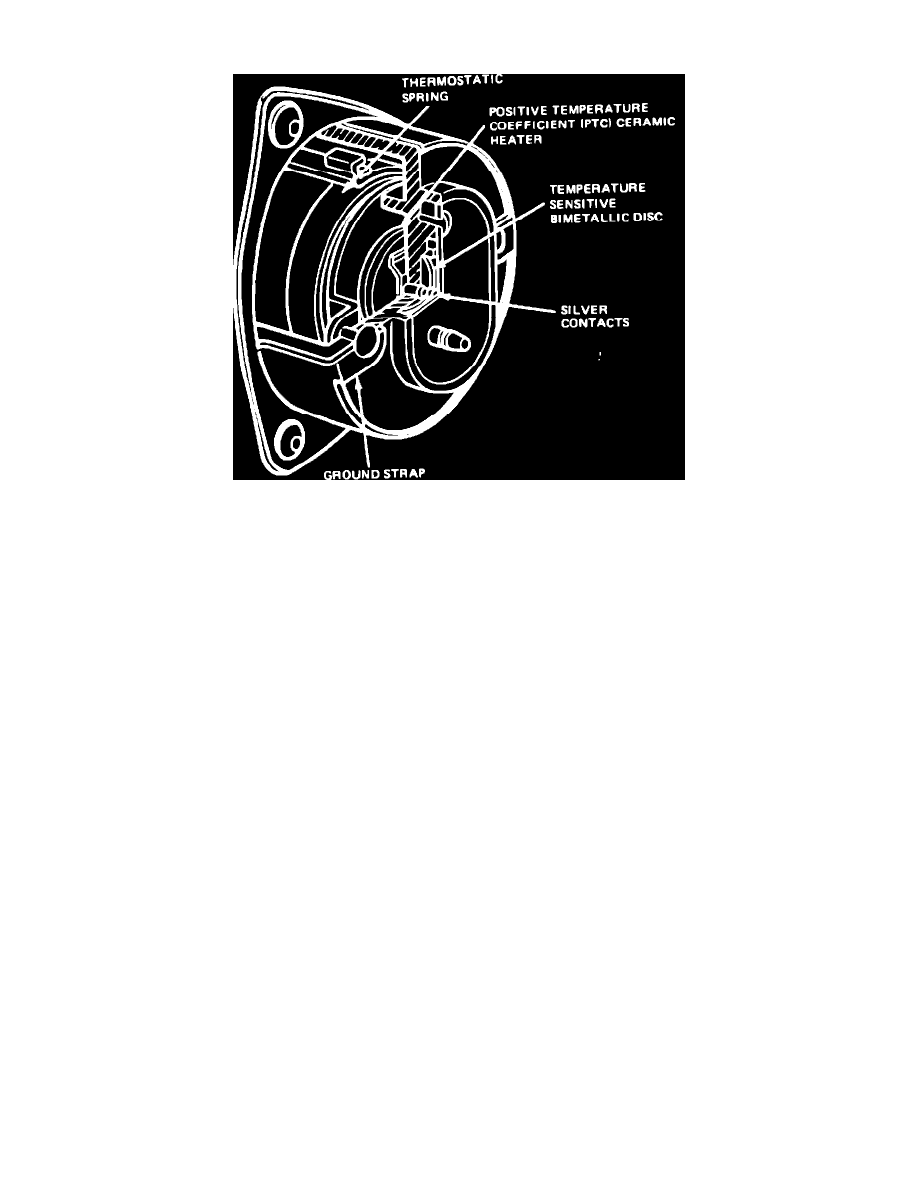Bronco L6-300 4.9L VIN Y 1-bbl (1983)

Choke Thermostat/Heater: Description and Operation
Fig. 45 Typical electric assist choke installation
Most carbureted engine models are equipped with an electric assist choke. This device aids in reducing emissions of hydrocarbons (HC) and carbon
monoxide (CO) during starting and warm-up (choke on) period. The electric assist choke is designed to give a more rapid choke opening at temperatures
of about 54° to 74° F, or higher. It also provides a slower choke opening at temperatures below this point.
The electric assist choke system does not change any carburetor service procedures and cannot be adjusted. If system is found out of calibration the
heater control switch and/or choke unit must be replaced.
The electric choke system, Fig. 45 consists of a choke cap, thermostatic spring, a bimetal temperature sensing disc (switch), and a ceramic positive
temperature coefficient (PTC) heater. The choke is powered from terminal or tap of the alternator. Current is constantly supplied to the ambient
temperature switch. The system is grounded through a ground strap connected to the carburetor body. At temperatures below approximately 60° F, the
switch opens and no current is supplied to the ceramic heater located within the thermostatic spring. Normal thermostatic spring choking action then
occurs. At temperatures above approximately 54°---74° F the temperature sensing switch closes and current is supplied to the ceramic heater. As the
heater warms, it causes the thermostatic spring to pull the choke plates open within 1 - 1.25 minutes.
